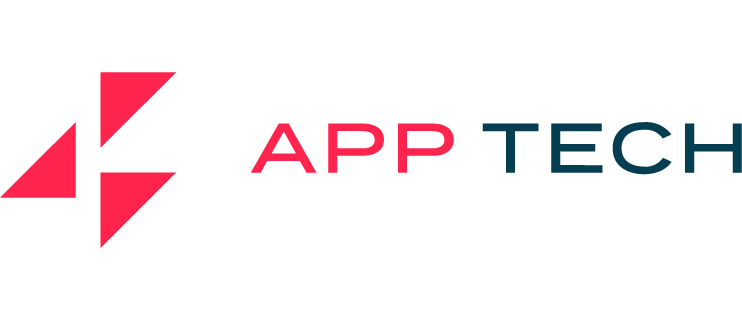When a key employee retires or leaves, the natural reaction is to brace for impact. But panic doesn’t usually solve much, and in fact, these transitions can be perfect opportunities to modernize, simplify, and future-proof your operations: Assess the processes heavily reliant on the departing employee’s knowledge, identify areas for automation or system upgrades, and implement new tech-based solutions to streamline workflows and reduce reliance on individual expertise.
Here’s how one company did just that, and why you should, too.
Retirement-induced modernization
Here’s the story of one of our clients (names have been changed to protect their identity): A midsized long-term care company that operates scores of locations nationwide was gearing up for the retirement of a long-time employee, Stan.
Stan is incredibly detail-oriented, fantastic with numbers, and comfortable wading through vast amounts of data. Our client operated their risk management department efficiently for decades under Stan’s stewardship. The only problem: most of Stan’s “system” ran on spreadsheets, shared folders on the network, and email chains. Although everything was clear to Stan, many hours (often late at night!) were spent tying out numbers and generating management reports. Furthermore, Stan was the only guy who knew the secret sauce to keep this system going.
When the company learned that Stan was retiring, they were smart enough to get ahead of the curve and upgrade long before he was actually out the door. They teamed up with us to roll out Cloud Claims. We were able to bring over all that legacy data and put it to work. That made workflow smoother, processes more consistent, and visibility a whole lot better. The payoff? Fewer manual errors, hours per month saved on reporting, and a stronger future-ready operation.
The problem with knowledge walking out the door
When someone leaves your company, they don’t just take their office plants and Employee of the Month plaque — they take a lot of know-how with them, too. And if that knowledge isn’t properly and thoroughly documented anywhere, your team may be left scratching their heads. You’ve probably heard something like, “Oh, Jeanie always handled that,” and now that Jeanie’s retired, nobody knows what to do next. Suddenly, even the simplest tasks feel daunting.
It’s not just about process — it’s also about the tools. If your operations are relying on spreadsheets, email threads, and/or old server-based systems, it’s possible that your team is fighting an uphill battle. These systems may have worked back in the day, but now they’re clunky and siloed, and when a key person leaves, things start to break down. Teams waste time hunting for information, fixing mistakes, or just trying to figure out how to keep things running. All of this leads to delays, frustration, and a lot of extra work that could’ve been avoided.
A smarter way to manage transitions
Here’s the thing: People leaving their roles is predictable. It’s going to happen! But instead of scrambling, smart companies see these transitions as a chance to improve.
It starts with a look inward, taking stock of what you’ve got. Are your workflows tied to one person’s brain? Are you using systems that made sense ten years ago but feel outdated now? Will any of this scale? This is your chance to be honest about what’s working — and what’s not.
Once you’ve got a clear picture, think about what you are doing manually that could be automated. What’s slowing your team down? There’s almost always room to make things easier and more efficient, whether it’s minimizing repetitive tasks or upgrading to tools that automate processes and free up valuable time for strategic work.
When your processes are consistent and easy to follow, it’s way simpler for new people to step in and get up to speed. And if you prioritize modern tools, your team will get much better access to the info they need to drive the business forward.
Technology as an enabler
Outside of the people you hire, technology is your best ally in smoothing transitions and setting up your org for long-term success.
Here are a few key areas where the right tools can make all the difference:
- UX/UI modernization. While spreadsheets and legacy systems may have worked for the retiring or resigning employee who built them, new hires — especially from younger generations — expect modern, user-friendly interfaces. A clean, intuitive UI makes it easier for new employees to be productive quickly and ensures they have the context they need to get the job done.
- Automation. Manual processes can slow teams down and increase the risk for errors. Automating repetitive tasks, like claims intake, data entry, and reporting, reduces these risks and frees up your team to focus on higher-value work.
- Knowledge management. When knowledge is locked in someone’s head or scattered across email threads, it’s hard to maintain consistency. However, using that knowledge and baking it into workflow workflow rules and event triggers is a great way to capture what works and make this know-how available and helpful to everyone.
- Cloud solutions. Server-based systems may have worked when everyone was in the same office, but today’s teams need more flexibility. Cloud-based solutions ensure your processes are accessible from anywhere — whether your team is in the field or working remotely. Plus, they require much less IT intervention, as software updates are automated and infrastructure isn’t needed.
Mitigating risk with proactive planning
Don’t wait for someone to hand in their notice. Prioritize proactive strategies to minimize disruption and reduce future risks.
Here’s how to build resilience into your operations:
- Cross-training programs. Don’t let knowledge live with just one person. Make it a habit to cross-train employees so that critical tasks aren’t dependent on a single individual.
- Employee-friendly tools. Transitioning to modern solutions, like APP Tech’s Cloud Claims, doesn’t just help your processes — it helps your people. Intuitive tools make onboarding smoother and reduce frustration, keeping your team happier and more engaged.
- Continuous improvement culture. Foster a mindset where your team regularly evaluates and updates processes. That way, you’re always improving — not scrambling to fix things when someone leaves.
The bottom line: Transitions are inevitable, but they don’t have to be painful.
Employee departures can feel like a challenge, but they’re also a golden opportunity to modernize and future-proof your processes. With APP Tech’s Cloud Claims solution, you’ll reduce reliance on individual expertise, streamline and automate manual tasks, and improve visibility across your operations.
If that sounds interesting to you, let’s talk. We’ll get a sense for what you’re up against, and if APP Tech can help, we’ll show you how.








